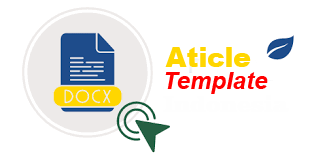Klasifikasi Kesehatan Mental Mahasiswa Menggunakan Light Gradient Boosting Machine Dan Analisa Fitur Menggunakan SHAP
DOI:
https://doi.org/10.30865/jurikom.v12i4.8771Keywords:
LightGBM, SHAP, Hyperparameter Tuning, ADASYN, Mental HealthAbstract
The mental health of college students is an important issue as many do not receive treatment despite needing it. According to the Association of University and College Counseling Center Directors 95% of college students experience an increase in psychopathology. This study uses the Light Gradient Boosting Machine algorithm to classify the mental health of college students based on a dataset that has a total of 61.794 rows and 16 columns. Light Gradient Boosting Machine is an implementation of Gradient Boosting Decision Tree which has two strategies namely gradient-base one-side sampling (GOSS) and leaf-wise growth. The accuracy results obtained using LightGBM reached 67% where the data used had been balanced using the class_weight parameter and the ADASYN technique. In addition, the research was analyzed to find the most contributing features using the SHAP (SHapley Additive exPlanations) method with the results obtained there are 6 features that have the highest contribution value including Country, treatment, mental_health_interview, family_history, Gender, dan self_employed.
References
Y. R. Shim, R. Eaker, and J. Park, “Mental Health Education, Awareness and Stigma Regarding Mental Illness Among College Students,” J Ment Health Clin Psychol, vol. 6, no. 2, pp. 6–15, Aug. 2022, doi: 10.29245/2578-2959/2022/2.1258.
S. K. Lipson and D. Eisenberg, “Mental health and academic attitudes and expectations in university populations: results from the healthy minds study,” Journal of Mental Health, vol. 27, no. 3, pp. 205–213, May 2018, doi: 10.1080/09638237.2017.1417567.
X. Liu, S. Ping, and W. Gao, “Changes in undergraduate students’ psychological well-being as they experience University Life,” Int J Environ Res Public Health, vol. 16, no. 16, Aug. 2019, doi: 10.3390/ijerph16162864.
M. Gan, S. Pan, Y. Chen, C. Cheng, H. Pan, and X. Zhu, “Application of the machine learning lightgbm model to the prediction of the water levels of the lower columbia river,” J Mar Sci Eng, vol. 9, no. 5, May 2021, doi: 10.3390/jmse9050496.
S. Jain and M. Gangwar, “A Data Mining Analysis Over Psychiatric Database for Mental health Classification,” International Journal on Future Revolution in Computer Science & Communication Engineering, 2018, [Online]. Available: http://www.ijfrcsce.org
B. R. Prasetyo, E. D. Wahyuni, and P. M. Kusumantara, “KOMPARASI PERFORMA MODEL BERBASIS ALGORITMA RANDOM FOREST DAN LIGHTGBM DALAM MELAKUKAN KLASIFIKASI DIABETES MELITUS GESTASIONAL,” Jurnal Informatika dan Teknik Elektro Terapan, vol. 12, no. 3, Aug. 2024, doi: 10.23960/jitet.v12i3.4817.
L. Qadrini et al., “ENSEMBLE RESAMPLING SUPPORT VECTOR MACHINE, MULTINOMIAL REGRESSION TO MULTICLASS IMBALANCED DATA,” Barekeng, vol. 18, no. 1, pp. 269–280, Mar. 2024, doi: 10.30598/barekengvol18iss1pp0269-0280.
R. Dahlia and C. I. Agustyaningrum, “Perbandingan Gradient Boosting dan Light Gradient Boosting Dalam Melakukan Klasifikasi Rumah Sewa,” Jurnal Nasional Komputasi dan Teknologi Informasi (JNKTI), vol. 5, no. 6, pp. 1016–1020, Dec. 2022, doi: 10.32672/jnkti.v5i6.5460.
V. Laijawala, A. Aachaliya, H. Jatta, and V. Pinjarkar, “Classification Algorithms based Mental Health Prediction using Data Mining,” in 2020 5th International Conference on Communication and Electronics Systems (ICCES), IEEE, Jun. 2020, pp. 1174–1178. doi: 10.1109/ICCES48766.2020.9137856.
F. I. Kurniadi and P. D. Larasati, “Light Gradient Boosting Machine untuk Deteksi Penyakit Stroke,” Jurnal SISKOM-KB (Sistem Komputer dan Kecerdasan Buatan), vol. 6, no. 1, pp. 67–72, Oct. 2022, doi: 10.47970/siskom-kb.v6i1.328.
K. . Aditya Ananta Wisnu Wardana and A. . Mizwar A. Rahim, “Analisis Perbandingan Algoritma XGBoost dan Algoritma Random Forest untuk Klasifikasi Data Kesehatan Mental,” Jurnal Ilmu Komputer dan Pendidikan, vol. 2, no. Vol. 2 No. 5 (2024): logic?: Jurnal Ilmu Komputer dan Pendidikan, pp. 808–818, 2024.
M. Syukron, R. Santoso, and T. Widiharih, “PERBANDINGAN METODE SMOTE RANDOM FOREST DAN SMOTE XGBOOST UNTUK KLASIFIKASI TINGKAT PENYAKIT HEPATITIS C PADA IMBALANCE CLASS DATA,” Jurnal Gaussian, Aug. 2020, doi: https://doi.org/10.14710/j.gauss.9.3.227-236.
Intan Permata and Esther Sorta Mauli Nababan, “Application Of Game Theory In Determining Optimum Marketing Strategy In Marketplace,” JURNAL RISET RUMPUN MATEMATIKA DAN ILMU PENGETAHUAN ALAM, vol. 2, no. 2, pp. 65–71, Jul. 2023, doi: 10.55606/jurrimipa.v2i2.1336.
J. Al Amien, Yoze Rizki, and Mukhlis Ali Rahman Nasution, “Implementasi Adasyn Untuk Imbalance Data Pada Dataset UNSW-NB15 Adasyn Implementation For Data Imbalance on UNSW-NB15 Dataset,” Jurnal CoSciTech (Computer Science and Information Technology), vol. 3, no. 3, pp. 242–248, Dec. 2022, doi: 10.37859/coscitech.v3i3.4339.
D. V. Ramadhanti, R. Santoso, and T. Widiharih, “PERBANDINGAN SMOTE DAN ADASYN PADA DATA IMBALANCE UNTUK KLASIFIKASI RUMAH TANGGA MISKIN DI KABUPATEN TEMANGGUNG DENGAN ALGORITMA K-NEAREST NEIGHBOR,” Jurnal Gaussian, vol. 11, no. 4, pp. 499–505, Feb. 2023, doi: 10.14710/j.gauss.11.4.499-505.
W. A. Firmansyach, U. Hayati, and Y. A. Wijaya, “ANALISA TERJADINYA OVERFITTING DAN UNDERFITTING PADA ALGORITMA NAIVE BAYES DAN DECISION TREE DENGAN TEKNIK CROSS VALIDATION,” 2023.
T. Chen et al., “Prediction of Extubation Failure for Intensive Care Unit Patients Using Light Gradient Boosting Machine,” IEEE Access, vol. 7, pp. 150960–150968, 2019, doi: 10.1109/ACCESS.2019.2946980.
M. R. Abbasniya, S. A. Sheikholeslamzadeh, H. Nasiri, and S. Emami, “Classification of Breast Tumours Based on Histopathology Images Using Deep Features and Ensemble of Gradient Boosting Methods,” Sep. 2022, doi: 10.48550/arXiv.2209.01380.
E. Ramadanti, D. A. Dinathi, C. Sri, K. Aditya, and R. Chandranegara, “Diabetes Disease Detection Classification Using Light Gradient Boosting (LightGBM) With Hyperparameter Tuning,” Jurnal dan Penelitian Teknik Informatika, vol. 8, no. 2, 2024, doi: 10.33395/v8i2.13530.
J. H. Park, H. S. Jo, S. H. Lee, S. W. Oh, and M. G. Na, “A reliable intelligent diagnostic assistant for nuclear power plants using explainable artificial intelligence of GRU-AE, LightGBM and SHAP,” Nuclear Engineering and Technology, vol. 54, no. 4, pp. 1271–1287, Apr. 2022, doi: 10.1016/j.net.2021.10.024.
M. T. Syamkalla, S. Khomsah, and Y. S. R. Nur, “Implementasi Algoritma Catboost Dan Shapley Additive Explanations (SHAP) Dalam Memprediksi Popularitas Game Indie Pada Platform Steam,” Jurnal Teknologi Informasi dan Ilmu Komputer, vol. 11, no. 4, pp. 777–786, Aug. 2024, doi: 10.25126/jtiik.1148503.
Additional Files
Published
How to Cite
Issue
Section
License
Copyright (c) 2025 Ditto Ridhwan Wibowo, Fajri Rakhmat Umbara, Ridwan Ilyas -

This work is licensed under a Creative Commons Attribution-ShareAlike 4.0 International License.








